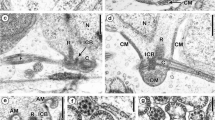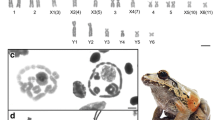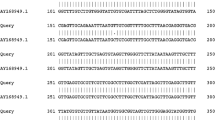Abstract
Light and electron microscopic evidence is provided to describe a new example of a postzygotic sex-determination system in two collembolan species, Bourletiella arvalis and B. hortensis. In B. arvalis, where chromosome number could be assessed, both sexes are homogametic (n=6) and all zygotes have an identical chromosome composition (2n=12). However, male embryos develop after the loss of two sex chromosomes, making the male genotype 2n=10 (4AAX10X20). On the other hand, female embryos develop if the zygote retains all chromosomes and the female genetic system is, therefore, 4AAX1X1X2X2 (2n=12). As an apparent consequence of the lack of two chromosomes in the male germ cells, spermatogenesis is aberrant. At the first meiotic division, in fact, the two resulting secondary spermatocytes receive a different number of chromosomes: six and four. The cells which receive six chromosomes (one haploid set of four autosomes and two sex chromosomes) proceed through the meiotic process and the two spermatids generated produce two spermatozoa by a normal spermiogenesis. The cells receiving only four chromosomes do not undergo the second meiotic division and soon degenerate. The degenerating cells can be considered a morphological marker for this process, as they are easily recognizable at the electron microscope from the functional secondary spermatocytes by the appearance of the nucleus (totally condensed), the reduction of the cytoplasm (limited to a thin layer surrounding the nucleus), and the lack of most cytoplasmic organelles (with the exception of a couple of centrioles). Electron microscopic evidence has been collected for both species, allowing to extend the same process to B. hortensis, even if chromosomes could not be counted in this species. Therefore, as a result of the spermatocyte elimination, the efficiency of spermatogenesis is reduced to 50%. This process is identical to that observed in other collembolan species of the suborder Symphypleona, and it is suggested that it represents a synapomorphic feature uniting the families Dicyrtomidae, Sminthuridae and Bourletiellidae (Sminthuriformia). It is also suggested that the process is related with the finding of a distorted sex ratio in natural populations and, possibly, with the evolution of parthenogenesis. This hypothesis is supported by the fact that chromosome pairing and genetic recombination occurs only during female meiosis, while chromosomes do not pair during male meiosis.
Similar content being viewed by others
Author information
Authors and Affiliations
Additional information
Accepted: 27 December 2000
Rights and permissions
About this article
Cite this article
Dallai, R., Fanciulli, P., Carapelli, A. et al. Aberrant spermatogenesis and sex determination in Bourletiellidae (Hexapoda, Collembola), and their evolutionary significance. Zoomorphology 120, 237–245 (2001). https://doi.org/10.1007/s004350100037
Issue Date:
DOI: https://doi.org/10.1007/s004350100037




